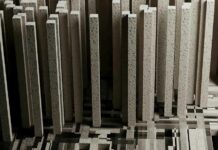In recent times, AI has been increasingly integrated into many facets of human life. Architecture is also exploring the fascinating possibilities of applying generative AI. Although it has been reported to assist in building designs, there is also concern that it might lead to professionals losing their jobs. So, is it a blessing or not?
Professionals in the sector are carefully analysing the situation. Despite the potential changes AI may bring, it will not pose a significant threat to architects as well as building design professionals. It is widely acknowledged that individuals who apply AI tools to their jobs will undoubtedly gain a competitive advantage in contrast to those who ignore the evolving landscape.
Artificial intelligence in architecture
Gopikrishnan V, one of the architects and CEOs of a company based in Kochi, dismisses the notion that AI will ruin job opportunities and prospects for architects and designers. Similar concerns surfaced when the internet emerged and when automation revolutionised this sector. In reality, technological innovations have never ended up in job losses. Instead, he said they only make changes in the business and service sectors, resulting in the creation of a greater number and variety of jobs.
He pointed out that those who failed to adjust to the changes were affected in terms of the quality of their work. It is well to be noted that architecture and building designs are not different from each other. Architectural design happens to be a complex process that includes multiple aspects, including computations, measurements, as well as artistic elements.
Designing, on the other hand, is essentially an optimisation problem. There are several variables that have links to functionality, and one chooses the most suitable solution by using a trial-and-error approach. AI is helpful in reducing the time needed for testing every option. It has the ability to generate different designs according to different iterations. Additionally, it can display any possible issues that may arise and provide solutions for them. All this can enhance the quality of the design, said Gopikrishnan.
According to Amruta Kishor, one of the representatives from a design firm, AI has the potential to generate amazing concepts. For example, if one is looking to have a blend of traditional Kerala-style architecture with European influences for a house, it usually takes a minimum of four days to develop a conceptual design via traditional techniques. However, by utilising AI tools, one can obtain results at a faster pace. Amruta also agreed with Gopalakrishnan’s viewpoint that AI will not entirely replace architects and building designers.
Could artificial intelligence pose a risk to drafters and technicians? Sanoob Sanalkumar, an architect based in Kochi, conveyed his belief that AI would not entirely take over the jobs of architects. He adds that there are several aspects involved in architectural design, like making choices and preparing according to a client’s needs, that cannot be replicated by AI. However, he acknowledged that the development of new AI tools might present a threat to drafters as well as technicians.
AI-generated design can be highly affordable
That said, the architects are quick to point out the limitations of AI tools too. If a specific design style is suggested, AI could produce repetitive choices. The question at hand is whether clients will choose a design service created through AI, which may have a lower price, or have an architect. According to the architects, the most practical choice would be to hire a professional who utilises AI tools and serves a larger number of clients, thus ensuring a high level of quality.
The judiciary is an excellent example for assessing the capabilities of AI. AI can certainly be utilised by a judge to reach a judgement. According to Gopikrishnan, AI has the ability to perform the same analysis that a judge takes 15 days to complete in a matter of seconds. This is exemplified by the AI’s capability of rapidly analysing multiple prior judgements concerning similar cases.
The architect plays a crucial role in navigating the quality, enhancement, and newness of a design. Let’s consider music as an example. If we were to request AI to generate music in the style of John Lennon, it has the potential to produce numerous compositions similar to the iconic musician’s work. However, it is possible that their music may not possess a comparable level of soulfulness as that of John Lennon himself. It will only be the musician who has the ability to improvise and create superior melodies through changing and reorganising the notes.
There is also a problem with the general perception of what AI is capable of. There happen to be both advantages as well as disadvantages to it. When we prompt AI to look into different possibilities, it will generate different versions. However, in order for it to achieve that, human engagement is necessary.




























